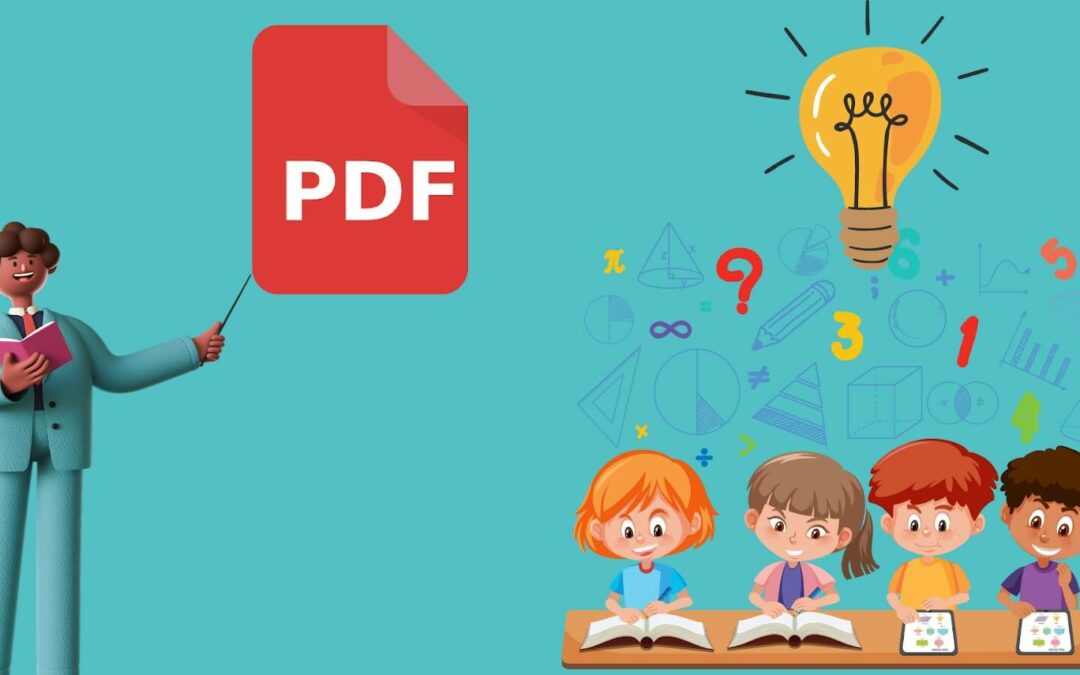Over the past decade, traditional education has evolved into digital education, where teachers have started using digital tools to enhance engagement and learning and maximize classroom efficiency. One such tool is PDFs.
COVID-19 drastically changed the way we work and study. As remote learning became necessary, teachers had to adopt digital tools like PDFs to take classes online quickly. Now, even post-pandemic, PDFs are a successful tool for quickly and efficiently creating interesting learning materials.
They open up a world of possibilities for creating informative and engaging documents. In this article, we will discuss the 7 benefits of using PDFs as a teacher productivity tool. Let’s look at how teachers can use this versatile file type to work smarter and faster!
7 Ways How Using PDF Acts as a Productivity Tool for Teachers
As a teacher, creating lesson plans and other materials to teach your students effectively is a daunting task. However, with PDFs and the right strategies, you can find ways to maximize your efficiency. Here are 7 benefits of using PDFs in a classroom;
1. Edit Online Documents
One benefit of using PDFs as a productivity tool for teachers is that they allow you to edit online documents without starting from scratch whenever something needs changes or updates. It doesn’t matter whether it’s an essay, group project, or practice quiz – PDFs make it easy to illustrate directly on the work the exact changes that should be made for better results!
Whether you desire to add comments, highlight parts of content, insert images, or draw mark-ups, it’s all possible with PDF. With a few clicks and taps of the keyboard, you can quickly convert online documents into PDFs to review and edit – no need to print out pieces of paper or rewrite anything.
2. Organize Teaching Materials
PDFs make organizing your classroom incredibly easy – you can quickly arrange seating plans for projects and exams, craft detailed lesson plans and reward systems to motivate your students, set down and keep track of rules, and jot down lists of semester planning essentials.
With PDFs, you can also easily organize all your teaching materials into one place and quickly access them when needed. It is especially helpful if you’re a teacher who juggles multiple classes with different curriculums.
3. Translate Documents for Language Classes
Imagine having a language class full of students, each with a different native language. No matter how hard you try, there will forever be a communication gap between you and your students. However, you can omit this communication gap with the help of PDF. PDFs allow you to quickly and easily translate course materials into any language, ensuring every student gets their head around the content.
As a teacher, handling multiple language translations of the same paper can be time-consuming, but using PDF to store all documents in one file can make life quicker and easier. You don’t have to worry about making many copies of the documents in different languages and distributing them – because it’s all stored in one single digital place.
Your students also have the convenience of being able to access the translated paper in their language without having to wait for their version from you.
4. Put Multiple Slides Together
Most students love presentations because they are vivid, fun, engaging, and easier to remember and understand. You can put all the slides together so that students have all the information in one place. So not only can you share this with your students ahead of time for them to study, but you can also use it as additional reference material during in-class activities, Q&A sessions, tests, and assignments.
5. Convert the Digital Files into PDFs
As a teacher, you want to make learning fun and clear for your students. There is so much teaching material that you can use, but it would take forever to type it all out. Don’t worry, there’s a way to get it into a usable format quickly and easily. Simply snap a photo of it with your phone and use our JPG / PNG to PDF conversion tool to automatically convert it into a readable and editable PDF file. From there, you can make any edits you need and have everything prepared for class.
6. Give Quick Feedback
Working from home and online has become the “new normal,” with many students opting for remote learning. But the downside is that it makes it difficult for teachers and graders to give feedback on student work.
However, with PDF, you can add comments and annotations directly onto the document to give instructions and grade papers quickly and conveniently without printing it out and writing comments manually. It also helps prevent miscommunication and ensures that students immediately get fast and accurate feedback.
7. Make Parent-Teacher Collaboration Easier
PDFs are a great way to make parent-school communication easier. Short questionnaires allow parents to know and answer important information about their children in just a few clicks. Parents could conveniently leave contact details, allergies, emergency numbers, and alternative contacts via email, saving both teachers’ and parents’ time in an accessible manner.
And if you’re particularly eager for feedback, you can create an end-of-year parent’s feedback page. Setting up such a form ensures you’ll get their genuine thoughts and opinions on your teaching methods and their child’s success at school – thus creating a close collaboration between school and home.
Bottom Line
Portable Document Format (PDF) files offer an array of benefits that make teaching easier and more productive than ever before. From allowing easy collaboration with parents to providing an efficient way to give feedback on student projects, these digital documents have become ubiquitous tools inside classrooms everywhere due to their versatility and convenience factors alone! So if you haven’t already embraced this simple yet powerful productivity tool, now is the time!

